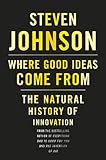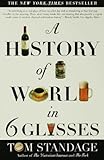|
|
Help |
| Home - Social Science - History (Books) | |
e99 Online Shopping Mall
|
|
Help |
| Home - Social Science - History (Books) | |
| Back | 21-40 of 99 | Next 20 |
click price to see details click image to enlarge click link to go to the store
| 21. Setting the Record Straight: American History in Black & White by David Barton | |
 | Paperback: 138
Pages
(2004-09-01)
list price: US$8.95 -- used & new: US$4.84 (price subject to change: see help) Asin: 1932225277 Average Customer Review: Canada | United Kingdom | Germany | France | Japan |
|
Editorial Review Product Description Customer Reviews (88)
| |
| 22. The Secret History of MI6 by Keith Jeffery | |
 | Hardcover: 832
Pages
(2010-09-21)
list price: US$39.95 -- used & new: US$19.00 (price subject to change: see help) Asin: 1594202745 Average Customer Review: Canada | United Kingdom | Germany | France | Japan |
|
Editorial Review Product Description The British Secret Intelligence Service—popularly known as MI6—is the oldest established continuously surviving foreign intelligence-gathering organisation in the world. It has also historically been the most secret department of the British government. Founded in 1909, its existence was not officially acknowledged until 1994. Before then official British representatives had to pretend, sometimes with embarrassing results, that there was no such organisation as ‘MI6’, and even if there was, they ‘couldn’t possibly comment’ about it. Although the agency has had a website since 2005, few details are released about the number of people who work for it or the size of its budget, nor are any of its officers publicly avowed, with the sole exception of the Chief, whose name has been published since 1992. Unlike Britain’s other security and intelligence organisations, MI5 (which covers domestic security, rather like the FBI) and the signals intelligence agency, the blandly-titled Government Communications Headquarters (GCHQ; analogous to the NSA), SIS releases absolutely none of its departmental records to the British National Archives. For almost all of its hundred-year existence, the strict line has been taken that the super-secret work of SIS, gathering foreign intelligence from foreign sources, has been of such vital national importance that no iota of information about it could formally be released to the public. Until now. The writing of an officially-authorised history of SIS presents challenges for the agency and historian alike. For the outcome not to appear to be some sort of ‘hack house history’ (and thus vitiate its value as a reliable, scholarly and authoritative work) the author has to be given sufficient freedom—or licence—to exercise his or her own critical judgments. The author, too, has to surmount the wisely sceptical assumptions of colleagues who may believe that the fact that he has been deemed suitable for the task may precisely render him unsuitable to produce a rigorous and independent history. Writing to such a commission necessarily involves accepting some constraints on what may be published, but so long as any redactions are limited to genuine matters of national security (though that itself is a matter of potentially differing judgment), and not simply to protect the agency from embarrassment, or to suppress failure or wrong-doing, it ought to be a price worth paying. It may in some degree be invidious that only a single individual is granted uniquely privileged access to what is certainly the ‘Holy Grail’ of British archives, but since it is the case that for the foreseeable future no similar access will be granted to anyone else, then perhaps the risk is worth taking. Customer Reviews (6)
| |
| 23. A history of China., [3d ed. rev. and enl.] by Wolfram Eberhard | |
 | Paperback: 324
Pages
(2010-07-12)
list price: US$9.99 -- used & new: US$9.99 (price subject to change: see help) Asin: B003VS0C56 Canada | United Kingdom | Germany | France | Japan |
|
Editorial Review Product Description | |
| 24. Bates' Guide to Physical Examination and History Taking, 10th Edition by Lynn S. Bickley | |
 | Hardcover: 992
Pages
(2008-12-11)
list price: US$105.95 -- used & new: US$79.95 (price subject to change: see help) Asin: 0781780586 Average Customer Review: Canada | United Kingdom | Germany | France | Japan |
|
Editorial Review Product Description The Tenth Edition of this classic text provides the best foundation for performing physical examinations and taking patient history. The book features a beautiful full-color art program and a clear, simple two-column format, with highly visual step-by-step examination techniques on the left and abnormalities with differential diagnoses on the right. This edition's health promotion sections have been extensively updated and expanded in all chapters, with new and revised national guidelines, pertinent screening tools, and more information about ways to help patients prevent disease and optimize their health across all settings and age groups. Detailed information on pain assessment is now included in the general survey, vital signs, and pain chapter. A new chapter presents assessment of mental health status and behavior to encompass the psychosocial dimensions of care. Evidence-based content has been increased, with pertinent findings, avenues for research, and references/suggested readings added across the entire book. More than 50 new line drawings and photos have been added. A bound-in CD-ROM and companion Website include 5 Approach to Patient videos, 15 Head-to-Toe Examination videos, 25 Assessment videos, heart and breath sounds, the Center for Disease Control's pediatric growth chart, journal articles, Nursing Professional Roles and Responsibilities, and the fully searchable text. An Instructor's Resource DVD-ROM and online instructor resources are also available. Customer Reviews (54)
| |
| 25. Where Good Ideas Come From: The Natural History of Innovation by Steven Johnson | |
 | Hardcover: 336
Pages
(2010-10-05)
list price: US$26.95 -- used & new: US$13.00 (price subject to change: see help) Asin: 1594487715 Average Customer Review: Canada | United Kingdom | Germany | France | Japan |
|
Editorial Review Product Description Customer Reviews (9)
| |
| 26. Introductory American History by Henry Eldridge Bourne | |
 | Hardcover: 176
Pages
(2010-05-23)
list price: US$37.95 -- used & new: US$27.12 (price subject to change: see help) Asin: 1161436960 Canada | United Kingdom | Germany | France | Japan |
|
Editorial Review Product Description | |
| 27. The History of the United States From 1492 to 1910, Volume 1 From Discovery of America October 12, 1492 to Battle of Lexington April 19, 1775 by Julian Hawthorne | |
 | Paperback: 232
Pages
(2010-03-07)
list price: US$31.36 -- used & new: US$31.36 (price subject to change: see help) Asin: 115370627X Canada | United Kingdom | Germany | France | Japan |
|
Editorial Review Product Description | |
| 28. The Jesus of history by T R. 1869-1943 Glover | |
| Paperback: 244
Pages
(2010-09-08)
list price: US$26.75 -- used & new: US$19.23 (price subject to change: see help) Asin: 1145640346 Canada | United Kingdom | Germany | France | Japan | |
|
Editorial Review Product Description | |
| 29. The History of the Decline and Fall of the Roman Empire, Volume 1 by Edward Gibbon | |
 | Paperback: 582
Pages
(2010-01-09)
list price: US$43.75 -- used & new: US$24.29 (price subject to change: see help) Asin: 1141970031 Average Customer Review: Canada | United Kingdom | Germany | France | Japan |
|
Editorial Review Product Description Customer Reviews (2)
| |
| 30. The History of England in Three Volumes, Vol.I., Part C. - From Henry VII. to Mary by David Hume | |
 | Paperback: 352
Pages
(2010-07-12)
list price: US$9.99 -- used & new: US$9.99 (price subject to change: see help) Asin: B003YJFOF0 Canada | United Kingdom | Germany | France | Japan |
|
Editorial Review Product Description | |
| 31. A History of the World in 6 Glasses by Tom Standage | |
 | Paperback: 311
Pages
(2006-05-16)
list price: US$15.95 -- used & new: US$5.75 (price subject to change: see help) Asin: 0802715524 Average Customer Review: Canada | United Kingdom | Germany | France | Japan |
|
Editorial Review Product Description Customer Reviews (71)
| |
| 32. Case Histories: A Novel by Kate Atkinson | |
 | Mass Market Paperback: 400
Pages
(2008-09-01)
list price: US$7.99 -- used & new: US$3.94 (price subject to change: see help) Asin: 0316033480 Average Customer Review: Canada | United Kingdom | Germany | France | Japan |
|
Editorial Review Product Description Customer Reviews (181)
| |
| 33. The History of England in Three Volumes, Vol.I., Part A. - From the Britons of Early Times to King John by David Hume | |
 | Paperback: 404
Pages
(2010-07-12)
list price: US$9.99 -- used & new: US$9.99 (price subject to change: see help) Asin: B003YJF1JE Canada | United Kingdom | Germany | France | Japan |
|
Editorial Review Product Description | |
| 34. Barron's AP World History by John McCannon Ph.D. | |
 | Paperback: 504
Pages
(2010-02-01)
list price: US$18.99 -- used & new: US$5.46 (price subject to change: see help) Asin: 0764143670 Average Customer Review: Canada | United Kingdom | Germany | France | Japan |
|
Editorial Review Product Description Customer Reviews (2)
| |
| 35. Don't Know Much About History: Everything You Need to Know About American History but Never Learned (Don't Know Much About...) by Kenneth C. Davis | |
 | Paperback: 678
Pages
(2004-04-13)
list price: US$14.99 -- used & new: US$8.78 (price subject to change: see help) Asin: 0060083824 Average Customer Review: Canada | United Kingdom | Germany | France | Japan |
|
Editorial Review Product Description Who really discovered America? What was "the shot heard 'round the world"? Thomas Jefferson and Sally Hemings: Did he or didn't he? From the arrival of Columbus through the bizarre election of 2000 and beyond, Davis carries readers on a rollicking ride through more than 500 years of American history. In this updated edition of the classic anti-textbook, he debunks, recounts, and serves up the real story behind the myths and fallacies of American history. Customer Reviews (176)
| |
| 36. A Short History of Greek Philosophy by John Marshall | |
 | Paperback: 134
Pages
(2010-07-12)
list price: US$9.99 -- used & new: US$9.99 (price subject to change: see help) Asin: B003YKFYM2 Canada | United Kingdom | Germany | France | Japan |
|
Editorial Review Product Description | |
| 37. The History of England in Three Volumes, Vol.I., Part D. - From Elizabeth to James I. by David Hume | |
 | Paperback: 448
Pages
(2010-07-12)
list price: US$9.99 -- used & new: US$9.99 (price subject to change: see help) Asin: B003YKGKP2 Canada | United Kingdom | Germany | France | Japan |
|
Editorial Review Product Description | |
| 38. A History of God: The 4,000-Year Quest of Judaism, Christianity and Islam by Karen Armstrong | |
 | Paperback: 496
Pages
(1994-08-09)
list price: US$17.00 -- used & new: US$4.32 (price subject to change: see help) Asin: 0345384563 Average Customer Review: Canada | United Kingdom | Germany | France | Japan |
|
Editorial Review Product Description Customer Reviews (221)
| |
| 39. AP U.S. History Crash Course (REA: The Test Prep AP Teachers Recommend) by Larry Krieger | |
 | Paperback: 240
Pages
(2010-02-17)
list price: US$11.95 -- used & new: US$7.00 (price subject to change: see help) Asin: 0738608130 Average Customer Review: Canada | United Kingdom | Germany | France | Japan |
|
Editorial Review Product Description Customer Reviews (18)
| |
| 40. History of King Charles the Second of England. by Jacob Abbott | |
 | Paperback: 326
Pages
(2010-08-21)
list price: US$30.75 -- used & new: US$19.41 (price subject to change: see help) Asin: 117759496X Canada | United Kingdom | Germany | France | Japan |
|
Editorial Review Product Description | |
| Back | 21-40 of 99 | Next 20 |